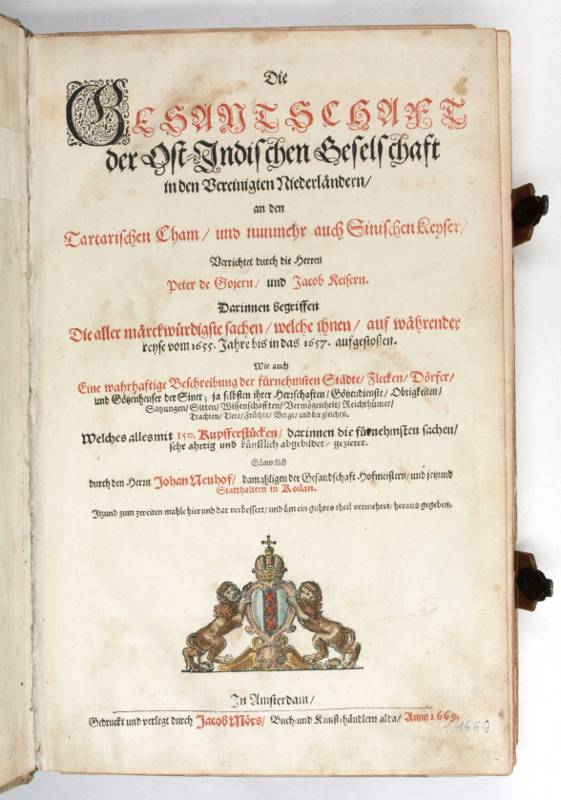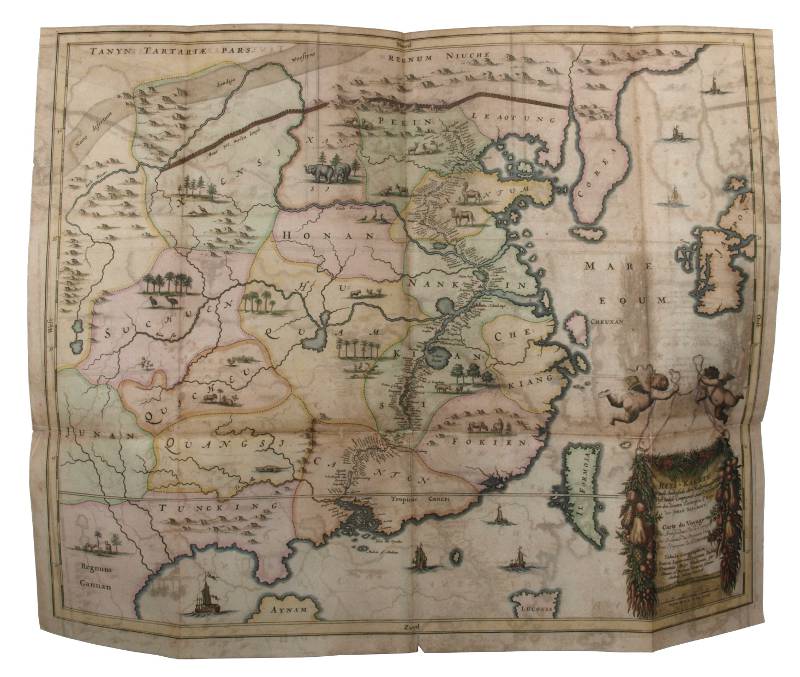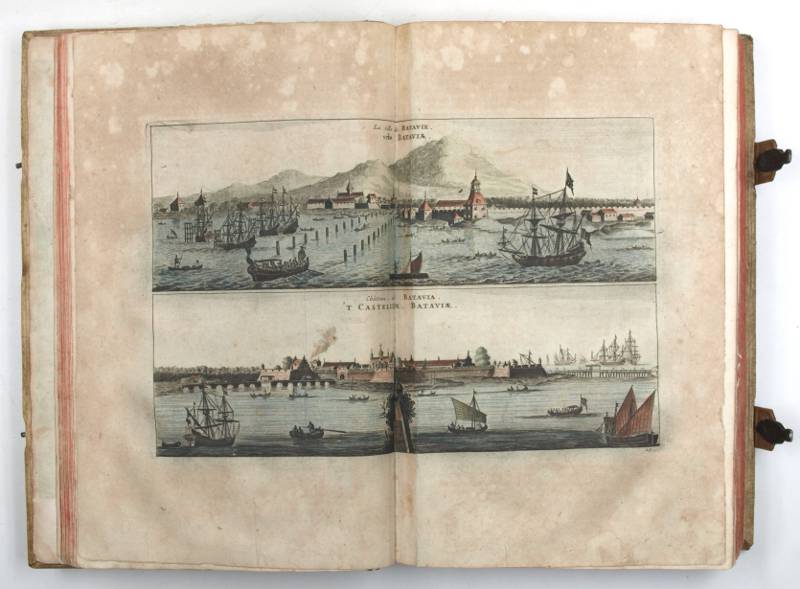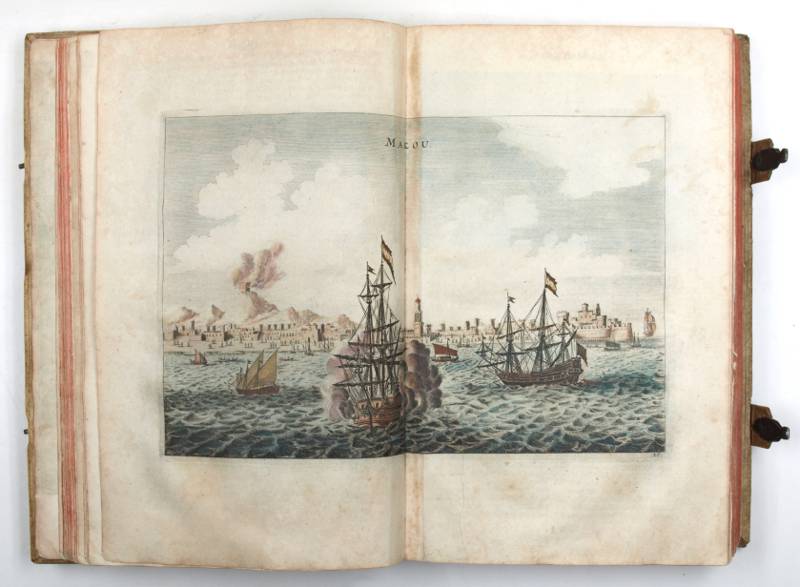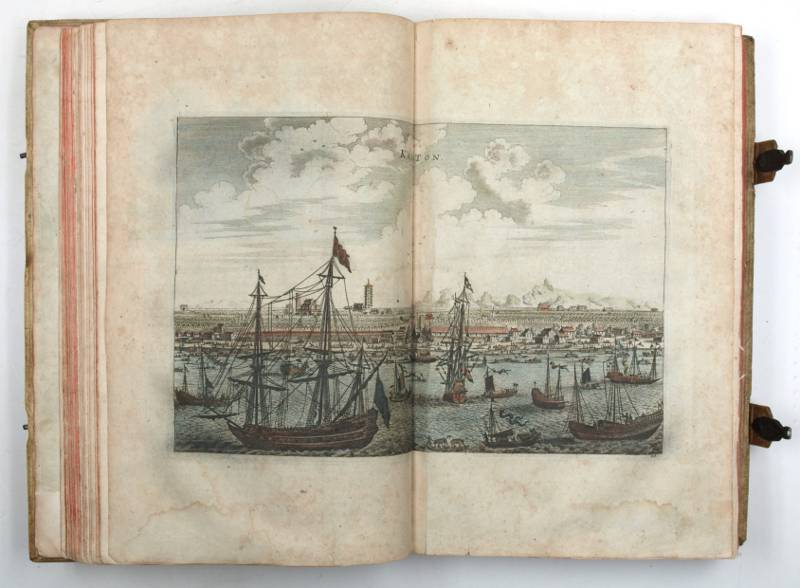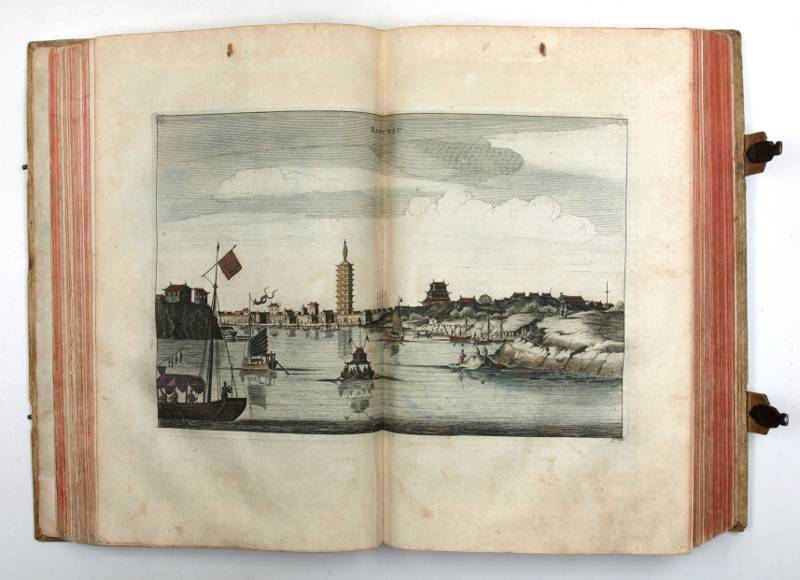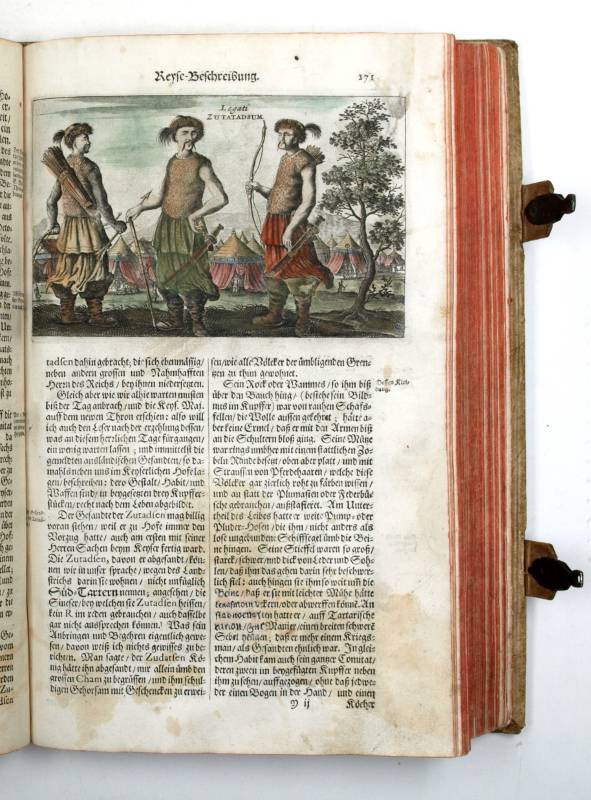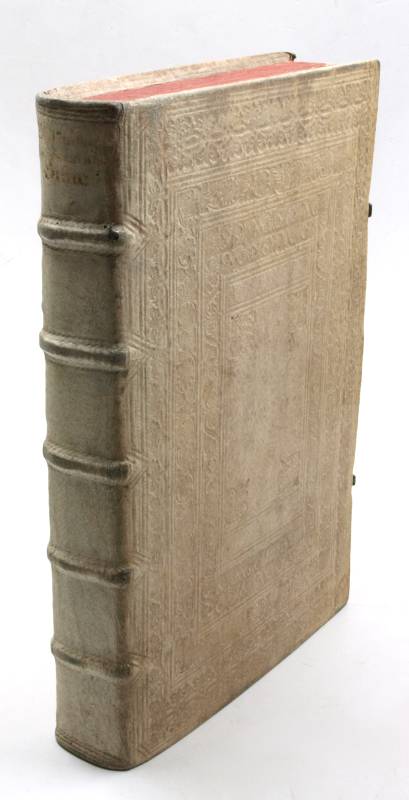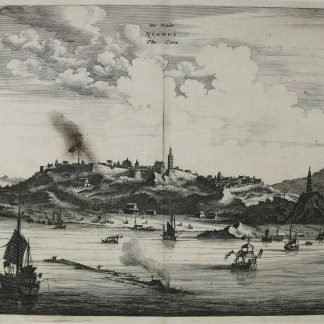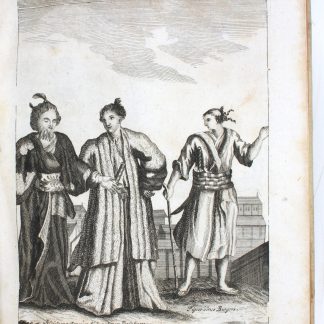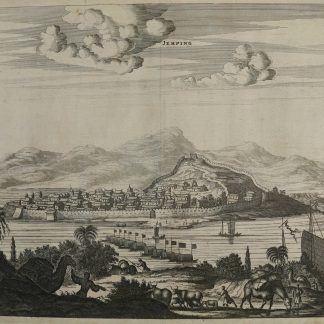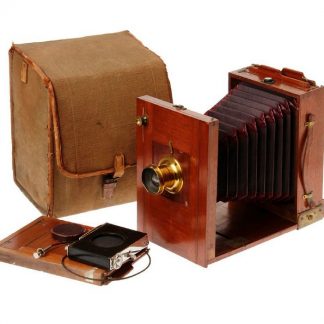[SOLD]
This item has sold. We are always interested in acquiring another copy or any item of comparable quality.
The VOC in 17th-century China, with ca. 150 illustrations coloured by a contemporary hand
Die Gesantschaft der Ost-Indischen Geselschaft in den Vereinigten Niederländern, an den Tartarischen Cham, und nunmehr auch Sinischen Keyser, verrichtet durch die Herren P. de Gojern und J. Keisern. Darinnen begriffen die aller märckwürdigste Sachen, welche ihnen, auf währender reyse vom 1655. Jahre bis in das 1657. aufgestoßen [...] Itzund zum zweiten mahle hier und dar verbessert, und um ein guhtes theil vermehret, heraus gegeben.
Folio (300 x 190 mm). Title printed in red and black. With the same engravings of the first Dutch edition of 1665: coloured engraved title page with the Chinese Emperor seated on a throne, his left arm resting on a globe and a convicted criminal at his feet, full-page coloured engraved portrait of Nieuhof with engraved poem by Jan Vos below, large folding map of China, 34 double-page engraved plates and views of Batavia, Canton, Macao, Nankan, Nankin, Beijing, etc., and 110 half-page engraved views and plates of ceremonies, costumes, animals, fishes and plants in the text all in contemporary colour. Contemporary blindstamped pigskin over wooden boards.
German edition. Very scarce coloured copy of the most important embassy to China in the 17th century. Nieuhof's celebrated account of the first trade mission undertaken by the Dutch East India Company (VOC) to the Imperial Court and the Emperor of China is one of the very few non-Jesuit sources of the period. First published in Dutch by Jac. van Meurs at Amsterdam in 1665, it soon became highly popular and was translated not only into German, but also into French, English and Latin. Today, it is regarded as the definitive account of the Dutch Embassy to Peking.
Johannes Nieuhof entered the service of the VOC after having travelled in the service of the Dutch West India Company through the West Indies and Brazil from 1640 to 1649. After two years of travels through the East Indies as a steward of the VOC, he was sent on this Dutch embassy to the Chinese Imperial Court, probably also because he was known to be an accomplished draughtsman. The embassy, together with embassies from the Mogols, the Tibetans and the South Tartars, was received in Beijing after a five-month journey from Canton. The object of the embassy was to obtain free trade throughout China. As common, it also served as a research expedition, and several scientists were members. They studied, described and drew from nature everything interesting they passed en route. Thus, the present account is not only written in a lively manner, but also richly illustrated with large views of all ports and places visited, starting with Batavia, whence the expedition sailed, and containing numerous text-engravings illustrating in detail 17th-century Chinese life and customs, including a beautiful series of engravings of the flora and fauna, all after Nieuhof's drawings. Also included is the famous double-page engraving of the Porcelain Tower, a 15th-century pagoda of nine storeys demolished in 1856 during the Taiping Rebellion, but soon to be rebuilt with the help of a billion-yuan donation made by the Chinese businessman Wang Jianlin in 2010.
VD 17, 3:606778R. Tiele 801. Graesse IV, 675. Cordier 2346. Cox I, 325, L. Blussé & R. Falkenburg, Johan Nieuhof beelden van een China-reis 1655-1657 (1987).


